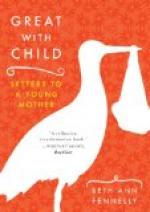I have already alluded, in my general remarks at the head of this chapter, to the acuteness of this sense in the blind, as well as in the dealer in cloths. I might add many more illustrations, but a single one, in relation to the blind, which was accidentally omitted in that place, will be sufficient.
The blind at the Institution in this city, as well as in other similar institutions, are now taught to read and write with considerable facility. But how? Most of my readers may have heard how they read, but I will describe the process as well as I can. A description of their method of writing is more difficult.
The letters are formed by pressing the paper, while quite moist, upon rather large type, which raises a ridge in the line of every letter, and which remains prominent after the paper is dry. In order to read, the pupil has to feel out these ridges. A circular ridge on the paper he is told is O; a perpendicular one, I; a crooked one, S; &c. They read music and arithmetic printed in a similar manner. A few months of practice, in this way, will enable an ingenious youth to read with considerable ease and despatch.
Now if nothing is wanting but a little training to render the touch so accurate, would it not be useful to train every child to judge frequently of the properties of bodies by this sense? And cannot every one recall to his mind a thousand situations in which a greater accuracy of this sense would have saved him much inconvenience, as well as afforded him no little pleasure?
I shall conclude this section with a few remarks on the HAND. The custom of neglecting, or almost neglecting the left hand, though nearly universal, in this country at least, appears to me to be wrong—decidedly so. For although more blood may be sent to the right arm than to the left, as physiologists say, yet the difference is not as great at birth as it is afterward; so that education either weakens the one or strengthens the other.
Besides this, we occasionally find a person who is left-handed, as it is called; that is, his left hand and arm are as much larger and stronger than the right, as the right is usually stronger than the left. How is this? Do we find a corresponding change in the internal structure? But suppose it could be ascertained that such a change did exist, which I believe has never been done, the question would still arise whether the difference was the same at birth, or whether the more frequent use of the left hand has not, in part, produced it.
I do not mean, here, to intimate that a more frequent use of the left hand than the right would make new blood-vessels grow where there were none before. But it would certainly do one thing; it would make the same vessels carry more blood than they did before, which is, in effect, nearly the same thing:—for the more blood in the limb, as a general rule, the more strength—provided the limb is in due health and exercise.




